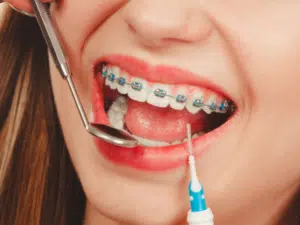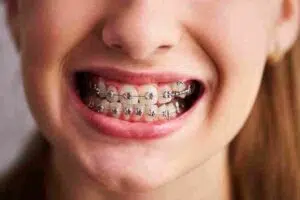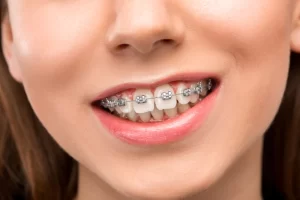Are Braces Worth It? Here’s What You Need to Consider
Straight teeth and a confident smile can change the way people see you and how you feel about yourself. For anyone thinking about orthodontic treatment, the question often arises: Are braces worth it? Deciding on braces isn’t just about appearances. It involves weighing the benefits, understanding the process, and considering long-term advantages for your health and confidence. This article explores the factors that make braces a worthwhile investment for many individuals.
Understanding How Braces Work
Braces are orthodontic devices designed to align teeth and improve oral function. They apply constant pressure over time, gradually shifting teeth into their ideal positions. The treatment typically addresses crooked teeth, gaps, overbites, underbites, and jaw alignment problems. Correcting these issues can have long-term benefits for oral health and overall confidence.
Benefits of Getting Braces
Braces provide both functional and aesthetic benefits. They don’t just improve the way teeth look; they also enhance oral health.
Improved Oral Health
Crooked teeth and misaligned bites make cleaning difficult. This often leads to plaque buildup, cavities, and gum disease. Properly aligned teeth reduce the risk of these problems by making brushing and flossing more effective.
Enhanced Chewing and Speech
Misaligned teeth can interfere with chewing and speech. Braces correct these issues, improving your ability to eat and speak clearly.
Boosted Confidence
A straight smile often leads to better self-esteem. Many people feel more comfortable in social situations after completing orthodontic treatment.
Preventing Future Problems
Misalignment can cause excessive wear on certain teeth, jaw pain, and even headaches. Correcting these issues early may prevent future complications and reduce the need for more extensive treatments.
Types of Braces
Advances in orthodontics offer several options to fit different needs and lifestyles. Each type has unique benefits.
Traditional Metal Braces
These are the most common and effective option. Metal brackets and wires are durable and work well for complex cases.
Ceramic Braces
Ceramic braces function like metal ones but use tooth-coloured brackets, making them less noticeable. They’re a popular choice for those wanting a discreet option.
Lingual Braces
Placed behind the teeth, lingual braces are nearly invisible. However, they may take longer to adjust to and can be more expensive.
Clear Aligners
Clear aligners like Invisalign are removable and nearly invisible. They’re convenient for eating and cleaning but might not suit severe alignment issues.
Factors to Consider Before Getting Braces
Before deciding, consider these essential factors.
Cost of Treatment
Braces are a significant investment. Costs vary depending on the type of braces, the severity of the alignment issue, and the orthodontist’s location. Many clinics offer payment plans or accept insurance, which can help manage the expense.
Duration of Treatment
Most treatments last between 18 months and three years. The length depends on the condition being treated and the patient’s adherence to the orthodontist’s instructions.
Commitment to Care
Wearing braces requires a commitment to regular check-ups and maintenance. Patients must follow specific care routines, including avoiding certain foods and cleaning around the brackets and wires carefully.
Age
Braces aren’t just for teenagers. Adults can benefit from orthodontic treatment too. It’s never too late to achieve a healthier, straighter smile.
What Happens During the Process
Understanding the treatment process can make the experience smoother.
- Initial Consultation
Your orthodontist will assess your teeth, take X-rays, and create a treatment plan tailored to your needs. - Fitting the Braces
The orthodontist attaches brackets to the teeth and connects them with wires. The process usually takes one to two hours. - Adjustments and Maintenance
Periodic visits to the orthodontist ensure the braces are doing their job. Adjustments are made during these appointments to keep the teeth moving correctly. - Removal and Retention
Once the treatment is complete, the braces are removed, revealing your new smile. A retainer helps maintain the results and prevents teeth from shifting back.
Common Concerns About Braces
Many people worry about how braces will affect their daily lives. Here are some common concerns and what to expect.
Pain and Discomfort
Braces can cause mild discomfort, especially after adjustments. Over-the-counter pain relievers and orthodontic wax help manage these minor issues.
Appearance
Some worry about how braces will look, but modern options like ceramic braces or clear aligners provide discreet solutions.
Dietary Restrictions
Sticky, hard, and chewy foods can damage braces. While this might seem limiting, many patients adjust quickly and discover new food options.
Speech Changes
Braces might temporarily affect speech. Most people adapt within a week or two.
Are Braces Worth the Investment?
The benefits often outweigh the challenges. Braces improve oral health, prevent future problems, and boost confidence. While the upfront costs and commitment might seem daunting, the long-term advantages make braces a worthwhile investment for many people.
Tips for Making the Most of Your Treatment
- Follow your orthodontist’s instructions carefully.
- Keep up with oral hygiene by brushing and flossing regularly.
- Attend all scheduled appointments for adjustments.
- Use a retainer after treatment to maintain your results.
Final Thoughts
Braces can transform your smile and enhance your overall quality of life. Considering the benefits, treatment options, and necessary commitment will help you make an informed decision. For many, braces are not just about aesthetics but a path to better oral health and confidence.





